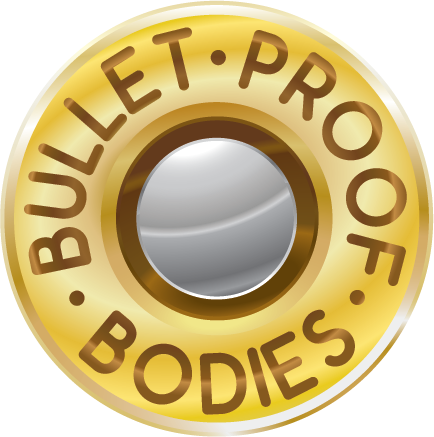Of all of the joints in your body, the shoulder is the most flexible and has the greatest range of motion.
To allow such range of motion the shoulder relies on surrounding muscles to provide the strength of movement and to also help keep the joint stable.
Unfortunately, many trainers teach exercises to strengthen only the major muscles of the shoulder and fail to teach exercises to strengthen the Rotator Cuff muscles.
This puts you at greater risk of injury because shoulder injuries happen for many different reasons and do not discriminate between athletes and average people.
A shoulder injury, especially a Rotator Cuff injury, can happen to anyone even if you are doing the most basic of tasks. For this reason, learning how you can prevent shoulder injuries is something everyone should do.
If you’ve ever worked out with a professional trainer or even researched exercises to build upper body muscles, you will have seen that most of the exercises target the major muscles of the chest, shoulders and back.
Of the eleven muscles the shoulder relies on for movement, the more commonly known muscles are latissimus dorsi (commonly called “lats”), trapezius (sometimes called “traps or “trapezoids”), pectoralis (commonly referred to as “pecs”), deltoid and rhomboid muscles.
These muscles are easily targeted in workouts because they surround the shoulder and form the shoulder cap and underarm.
While important for the actual movement of your arm, these muscles cannot work alone. No matter how big or defined your theses muscles are, they still need support from the Rotator Cuff.
The shoulder is a very complex joint and the look of large, sculptured muscles can be deceiving.
With the range of motion the shoulder offers, it also sacrifices stability. The two main roles of the Rotator Cuff are to provide stability to the shoulder throughout the range of motion and to help fine tune movements in the shoulder as the major muscles move.
This is why it is so vitally important when working out to include the Rotator Cuff in your targeted exercises. This will help you to prevent shoulder injuries by increasing stability of the shoulder and supporting the major muscles as they function.
The four muscles of the Rotator Cuff are the Subscapularis, Teres Minor, Supraspinatus and Infrastpinatus.
Each of the four muscles begin at the Scapula or the shoulder blade and insert on the upper bone of the arm called the Humerus. Each muscle crosses the shoulder in such a way that it surrounds the joint and forms a protective web to help secure it in place.
To understand their function, you could say that the Rotator Cuff muscles tie the arm bone to the shoulder yet still allow it to be flexible. The Supraspinatus is the muscle that helps the Deltoid raise the arm and also assists with outward rotation.
The Infrastpinatus and Teres Minor are the two muscles that help pull the arm downward or into the joint cavity when performing pull ups and other pulling movements. And finally the Subscapularis is the muscle on the front of the shoulder blade and helps provide stability during inward rotation of the arm.
Anyone who has suffered from a Rotator Cuff injury knows that damage to any one of these smaller muscles can result in a very significant loss of shoulder function. Healing after a muscle or tendon has been torn may create scar tissue that makes it even more prone to re-injury.
This makes it even more important to seek proper rehabilitation as soon as you are injured to reduce your chances of weak healing and scarring. As with any injury, seek medical attention as quickly as possible and begin rehabilitation as soon as you are cleared to do so. This could be the difference between returning to full function and years of pain and suffering from the same injury.
Preventing injuries is always the best practice and should always be a priority. Learn the proper mechanics of lifting weights. Learn how to develop good body posture during exercises.
Use an exercise program that is designed to promote flexibility and teaches you how to build all of the muscles in the shoulder, not only the major muscles. While all shoulder exercises will help the Rotator Cuff in some small way, there is no denying the benefits of using specific exercises to strengthen those muscles individually. Remember the old saying, “a chain is only as strong as its weakest link”? There is no better analogy that could apply to the shoulder muscles. Strengthen the link… strengthen the chain.
After my second shoulder injury and successful rehabilitation without surgery, I have made it my goal to help others avoid the unnecessary pain and suffering so many go through after their injury. Fear of not wanting to further damage the shoulder, the pain you feel even when you are doing nothing and the lack of knowledge are normally what will keep you from taking action and starting your rehabilitation early.
I have developed a website to help answer some of your questions and to help overcome the fear that is typically associated with the rehabilitation process. You don’t need to take handfuls of pills to get you through the day and you may not need the surgery you think you do. But one thing you cannot do, you cannot wait too long to get help. Please visit The Rotator Cuff Healing Center now and get the answers you deserve.
Here is the website for your convenience:
http://rotatorcuffhealing.yolasite.com
Article Source: https://EzineArticles.com/expert/Jim_Batuyong/333875
Article Source: http://EzineArticles.com/6689671
Video: https://www.youtube.com/user/FitnessFAQs

